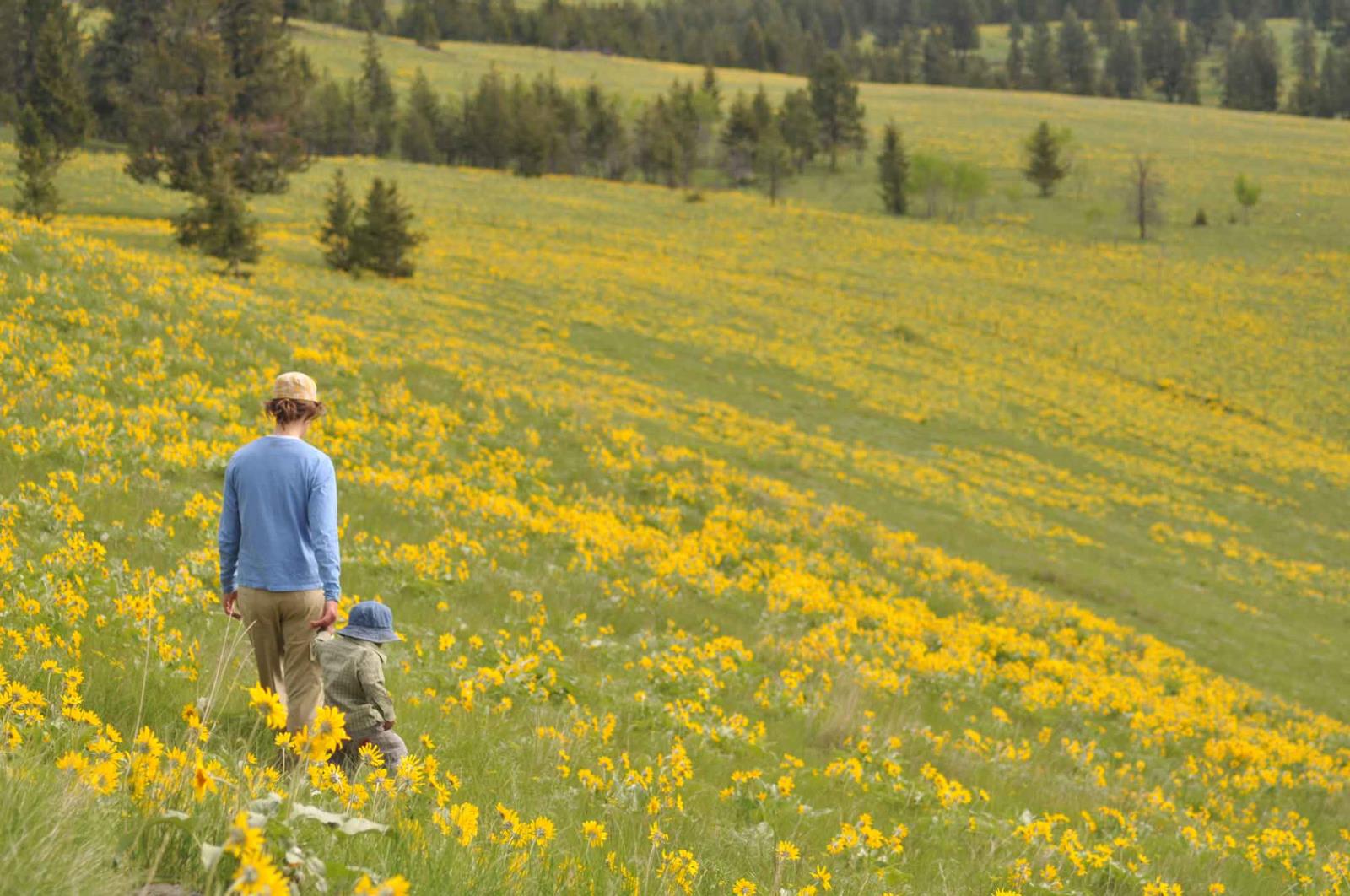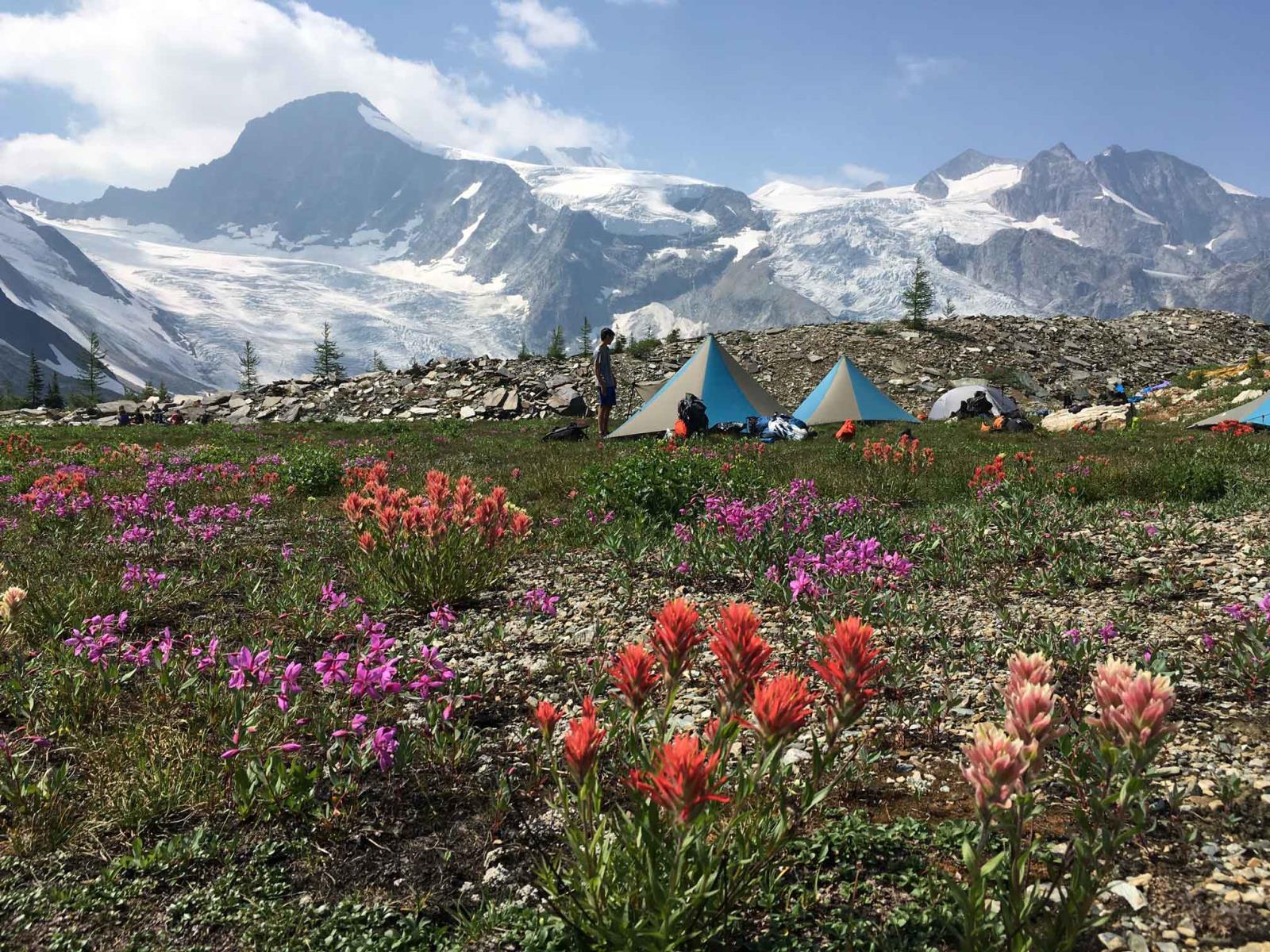Cranbrook Spring Wildflowers
Sometimes the smallest wonders shine the brightest, even in the shadow of some of the most spectacular mountain scenery around. The Cranbrook area is blessed with a rolling carpet of wildflowers that slowly works its way from the open grasslands up through the forested meadows to a final, riotous display of colours and smells in the alpine sky meadows.
Flowers are more than just visually stunning natural wonders. They carry the power to transport us, trigger memories, or simply inspire fits of unreasonable excitement when the long Kootenay winter gives way and the first light purple Crocuses or strident pink Bitterroot flowers burst from the frozen ground.

The early-May Shooting Star show on the Skookumchuck Prairie is one of the first big wildflower shows around Cranbrook.
Wasa Lake Provincial Park is a great spring destination to look for flowers starting in mid-April, although any low elevation open forest or grassland will reward a walk with displays of Purple Lupine, magenta Stars, delicate Yellow Lemonweed, or dark purple Larkspur depending on the time of year.

Balsamroot sunflowers in full glory in the Wycliffe Wildlife Corridor. These rare grasslands are incredibly sensitive, so please keep your dogs on leash to protect ground-nesting birds, and stick to existing trails.
The event that brings out the locals and visitors alike is the arrival of the Balsamroot Sunflowers in early to mid-May. While there are reliably thousands of these giant, brilliant yellow blooms carpeting places like the Wycliffe Buttes and Sunflower Hill, some years things are just right and the entire valley floor is carpeted with a literal sunflower sea of yellow. Tread lightly and stick to existing trails and tracks if you do head out view grassland flowers. Grasslands are the most threatened and sensitive ecosystem in the region, and their thin soils are easily disturbed, allowing invasive species like Knapweed, Cinquefoil, and Blueweed to replace our gorgeous and critical native blooms.
Another event that inspires awe is when Beargrass flowers carpet vast areas of the subalpine forest around Cranbrook with waist-high, aromatic blooms from mid-July onwards, working their way upslope. These plants flower on average once every seven years, and while there are always a few blooms to be found, on peak years the show of fireworks-like blooms exploding across the mountains is an inspiring thing. The South Country high on the slopes of Gold, Caven, and Bloom Creeks south of Cranbrook are a great spot to look for Beargrass.
Other forest wonders are the carpets of Fireweed that help heal fire-ravaged slopes, the delicate trailing Clematis vines that wrap their way up tree trunks searching for light, and the Willowherb and Monkeyflowers that line the banks of tiny streams.

Paintbrush and willowherb colour an alpine meadow under the watchful eye of the glaciers in the Purcell Mountains North of Cranbrook.
Finally, following the retreating snows up the mountain, and even bursting through the last thin covering of white are the alpine flowers. Delicate yellow Glacier Lilies are known for their impatience, shoving right up through the last of the winter snow to carpet entire slopes. They are soon joined by Yellow, White, and Pink Mountain Heather, Alpine Pasqueflowers, avens, and highly aromatic flowers like purple Jacob’s Ladder. The colours and delicate shapes of these alpine beauties seem even more miraculous under a backdrop of glacier ice and jagged, shattered rock. As soon as the snows melt enough to allow hiking in mid-June, the avalanche paths and meadows along the Maus Creek and Tanglefoot trails are flush with Glacier Lilies and other alpine flowers.
No matter where you find your flowers, tread carefully, and take only photos. Flowers contain the seeds of next year’s miracle, bear the fruits that might help our wild neighbors survive, or might be important traditional Ktunaxa medicine, so please do not pick wildflowers. Want to pick up a copy of the Ktunaxa Ethnobotany Handbook? They are available online, or at the Cranbrook Visitor Centre.
Need help identifying plants? You can download the Picture This - Plant Identifier app for Android and Apple.
Be sure to take time, however, to close your eyes and literally smell the roses. The scents of these Kootenay wonders will linger in your memory as long as the photos you take home with you.
Dave Quinn is a Cranbrook-born author, outdoor educator and wildlife biologist whose work explores the evolving connections between humans and the natural world. He is proud to raise his family and share stories in Ktunaxa traditional territory.

